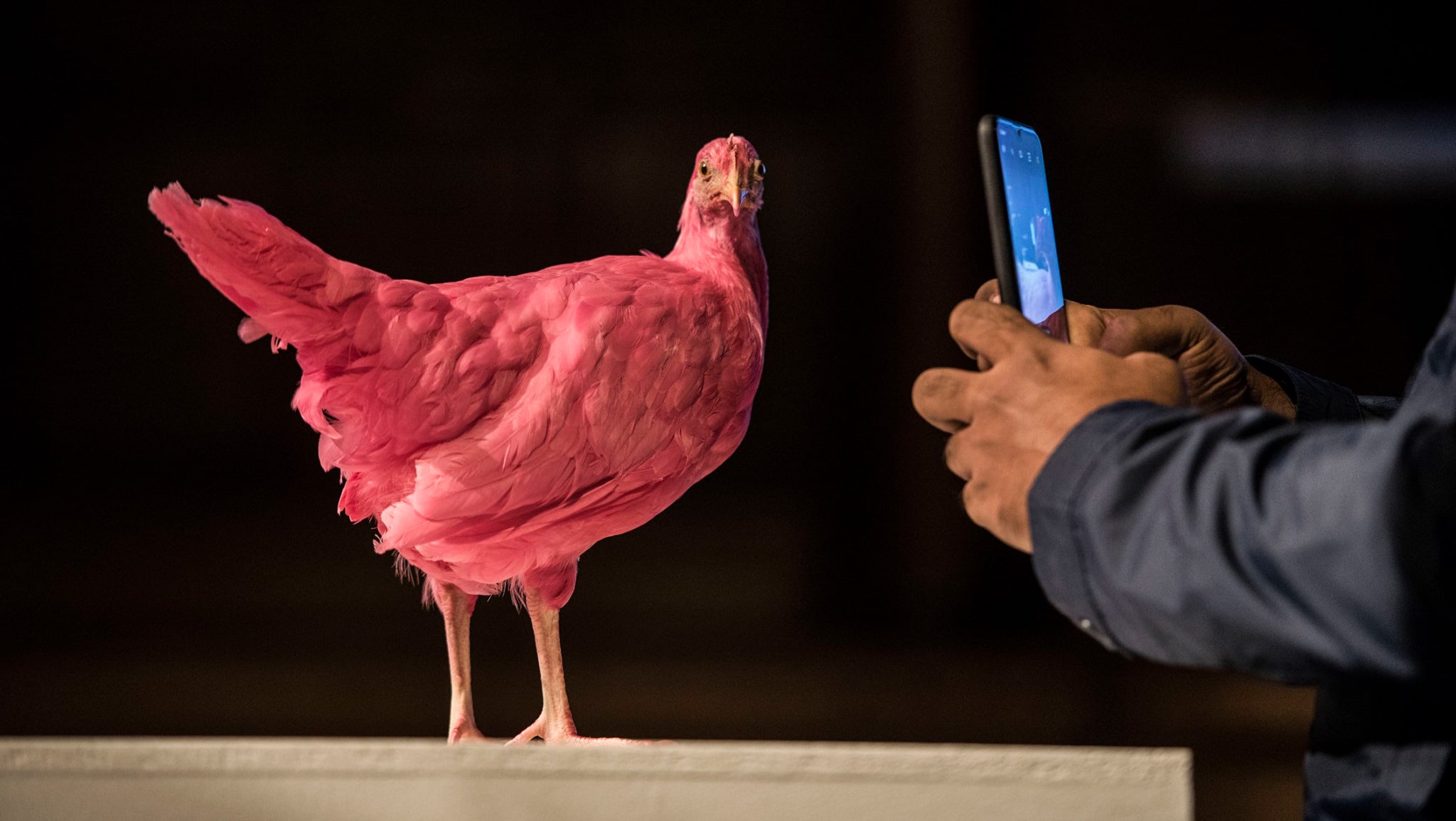Pink chickens, synthesized tiger penises and salads grown from bodily fluids - how could they shape our future? In a Next Nature collaboration with the Gogbot Festival, the event’s 2019 conference challenged audience members to suspend their disbelief and imagine. In a series of fascinating presentations from designers, artists, scientists and bio-hackers, participants and audience members alike were invited to consider: what would a world in which biotechnology becomes our next nature look, taste and feel like?
Technology as nature
In times where the term ‘biotechnology’ alone may trigger feelings of discomfort and fear, the conference sought to provide an alternative view on biotechnological applications and to visualize constructive collaborations between nature, culture and technology.
Hosted by NNN’s editor-in-chief Ruben Baart, the conference began with a talk from NNN director Koert van Mensvoort. Crucial to his philosophy is the notion that technology has become so complex, autonomous and omnipresent that the line between nature and technology is blurred - that technology can be best understood as nature in itself.
The body as a resource
Following Koert van Mensvoort’s philosophical framing of the permeability of nature and technology, the first part of the conference focused on the idea of the body as a resource and what being human may mean in a world of biotechnological progress.
This began with a presentation by biohacker and DIY-futurist Peter Joosten. His talk focused on the potential of the human body as a site for modification, and proposed how hacking our own bodies may lead to exciting possibilities. Joosten pushed the audience to consider their own attitudes towards biohacking, asking what technologies they would be comfortable with - from glow-in-the-dark eye drops to having a bionic eye.
Following this, design researcher Thieu Custers discussed his project Bodyponics in which he used natural by-products of his own body to grow the ingredients of a salad. His project played with our conceptions of bodily fluids as waste products whilst offering a more sustainable way of producing food. To their surprise, audience members were invited to contribute their own urine for Custers’ DYI salad kit project!
Exploring the potential of biotechnology
The next part of the conference consisted of short presentations by five upcoming designers who shared their visionary proposals for the future applications of biotechnology.
Shahar Livne presented her project The Meat Factory and in particular, her sneakers made of animal blood. The project is an ongoing exploration of material processes. Livne uses animal blood (an often unused by-product of the meat industry) as a material alternative to the highly polluting leather industry. Her approach challenges with the line we draw between attractiveness and disgust, the usable and unusable, sustainable and unsustainable.
Kuang-Yi-Ku discussed his Tiger Penis Project. A work imagines a future in which - using the designers words - a “culturally stronger penis” could be produced. The designer’s goal involved synthesising the practices of traditional Chinese medicine and mainstream Western medicine. Through the speculative creation of an artificial tiger penis, made using animal cells, the hybridization of medical practices was proposed to prevent the destruction of traditional cultural practices and the animals they involve.
Non Human Nonsense, consisting of Leo Fidjeland and Linnea Vaglund, took the stage with their wish to turn all chickens on Earth pink. Their work aims to unbound certainty and explore how speculation can reveal the complexity behind our relationships with nature. In their imagined application of CRISPR technology, the designers proposed world every chicken would be genetically modified to be pink. Eventually, their fossils will also colour the geological strata pink - forming the ultimate marker of the Anthropocene. Whether utopian or dystopian, this project opened up conversation about the future uses of technology such as CRISPR as well as the lasting impact of humans on the earth itself.
Quang Tran Bich’s project imagined how we may adapt our skin to better sense an increasingly virtual world - the designer asked, “what if we could feel wifi?” His work contemplates how transformations in our technological surroundings may require a change in the way we interact, sense, touch and use our bodies. He powerfully presented a future in which our skin may be the next interface.
The fifth speaker was Valerie Daude, a designer who addresses our relationship with our gut microbiomes. She thinks about the ways in which we can make our bacterial levels visible through the use of wearable masks. Daude considers how sharing our highly unique microbiome levels with others, like data, may transform our relationships with humans and nonhuman bacteria. Could we use the masks as a therapeutic tool, or transfer desired bacteria to each other when needed?
Towards a joint vision
The event culminated in a panel discussion that invited experts and audience members to engage in the debate and to help formulate a joint vision. Ruben Baart, Koert van Mensvoort, biodesigner Emma Van Der Leest and science communication researcher Joyce Nabuurs discussed the role of speculative design and the importance of the projects presented in terms of fostering debate and changing attitudes.
The takeaway message of the conference was one of positivity and momentum. The afternoon demonstrated a critical engagement with the huge potential for biotechnology to positively impact our lives and the planet as a whole. The format of the conference, which allowed audience members to engage with speakers, continually highlighted the importance of discussion and the democratisation of scientific ideas. Ultimately, we all have a right to participate in the formation of our futures. Finally, the conference demonstrated how the projects discussed can play a vital role when it comes to the idea of biotechnology becoming our next nature.
These projects can form a guide for progressing with technology in meaningful and collaborative ways - particularly at a time when social hurdles seem to outweigh technological ones.

Share your thoughts and join the technology debate!
Be the first to comment